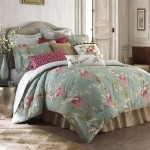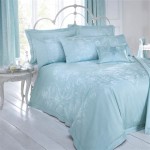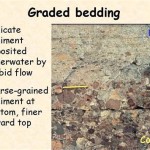What's the Best Bedding for a Tortoise?
Choosing the right bedding is crucial for a tortoise's health and well-being. It impacts humidity regulation, hygiene, and even their ability to thermoregulate. The wrong substrate can lead to respiratory infections, shell rot, and other health problems. This article examines various bedding options, outlining their benefits and drawbacks to help tortoise owners make informed decisions.
Key Considerations When Choosing Tortoise Bedding
Several factors must be considered when selecting the optimal bedding for a tortoise. These considerations are essential for creating a habitat that mimics the tortoise's natural environment and promotes healthy living.
- Species-Specific Needs: Different tortoise species originate from diverse environments, influencing their bedding requirements. Researching the natural habitat of your tortoise species is crucial.
- Humidity Control: Maintaining appropriate humidity levels is vital for respiratory health and shell integrity. The bedding should be able to retain some moisture without becoming overly damp.
- Burrowing Behavior: Many tortoises are natural burrowers. The bedding should facilitate this behavior, providing a sense of security and temperature regulation.
- Dust and Mold Resistance: Dusty bedding can irritate a tortoise's respiratory system. Mold growth, facilitated by damp and poorly ventilated environments, is also a health hazard.
- Ease of Cleaning and Replacement: Regular cleaning is essential for hygiene. The bedding should be easy to spot clean and replace without excessive effort.
- Cost and Availability: While prioritizing the tortoise's well-being, the cost and availability of the bedding material are practical factors to consider.
Cypress Mulch: A Popular Choice
Cypress mulch is a widely used bedding option, favored for its ability to retain moisture and create a humid microclimate. Its natural aroma is also appreciated by many tortoise keepers.
Coconut Coir: A Sustainable Option
Coconut coir, a byproduct of coconut processing, is an eco-friendly and increasingly popular bedding choice. It retains moisture well, making it suitable for species requiring higher humidity levels.
Tortoise Bedding Blends: Combining the Best of Both Worlds
Many commercially available tortoise bedding blends combine different materials to offer optimal characteristics. These blends often incorporate elements like sphagnum moss, peat moss, and vermiculite to enhance moisture retention and create a suitable burrowing substrate.
Sphagnum Moss: For Humidity Control
Sphagnum moss is especially useful for species requiring high humidity levels. It’s often used in combination with other substrates to enhance moisture retention and create a humid microclimate. It's essential to ensure the moss is pesticide-free.
Peat Moss: Another Option for Humidity
Similar to sphagnum moss, peat moss also helps retain moisture. However, it can become compacted, making it less suitable for burrowing species. It’s also important to ensure it does not dry out completely, as this can create a dusty environment.
Vermiculite: For Water Retention
Vermiculite is a mineral that excels at water retention. It is often mixed with other substrates to enhance their moisture-holding capacity. It should not be used as a sole bedding material due to its lack of structural integrity for burrowing.
Newspaper and Paper Towels: Temporary Solutions
Newspaper or paper towels can serve as temporary bedding solutions, particularly for quarantine or medical purposes. They are easily disposable and facilitate cleaning. However, they do not offer adequate burrowing opportunities or long-term humidity control.
Substrates to Avoid: Protecting Your Tortoise's Health
Certain substrates are unsuitable for tortoises and should be avoided. These include cedar and pine shavings, which contain harmful aromatic oils, and sand, which can cause impaction if ingested.
Maintaining Proper Bedding Hygiene
Regardless of the chosen bedding, regular maintenance is essential. Spot cleaning should be performed daily to remove waste and uneaten food. Complete bedding changes should be conducted regularly, with the frequency depending on the specific substrate and the tortoise's environment.
Observing Your Tortoise: Key to Choosing the Right Bedding
Monitoring your tortoise's behavior is crucial. If the tortoise appears uncomfortable or exhibits signs of respiratory distress, the bedding type or humidity levels may need adjustment. Consulting a veterinarian specializing in reptiles is recommended for any health concerns.
Creating a Naturalistic Habitat: The Ultimate Goal
The ultimate goal is to create a habitat that replicates the tortoise's natural environment as closely as possible. Careful consideration of the species-specific needs and the properties of different bedding materials is essential for achieving this objective and fostering a healthy and enriching environment for your tortoise.

Substrates For Tortoise Enclosures

Substrates For Tortoise Enclosures

Russian Tortoise Substrate Bedding The 3 Best Guide 2024

Why Use Hay As Tortoise Bedding Grandpa S Best

Best Substrate For Sulcata Tortoise Turtleholic

Best Substrate For Russian Tortoise Top 3 Choices To Consider Turtleholic

The Best Bedding For Tortoise Turtleholic

Straw Or Hay As Tortoise Bedding Do S Dont Owner

The Best And Worst Bedding Substrates For Baby Juvenile Tortoises Tortoise Expert

Tortoise Substrate What To Choose And How Use Home Roost








